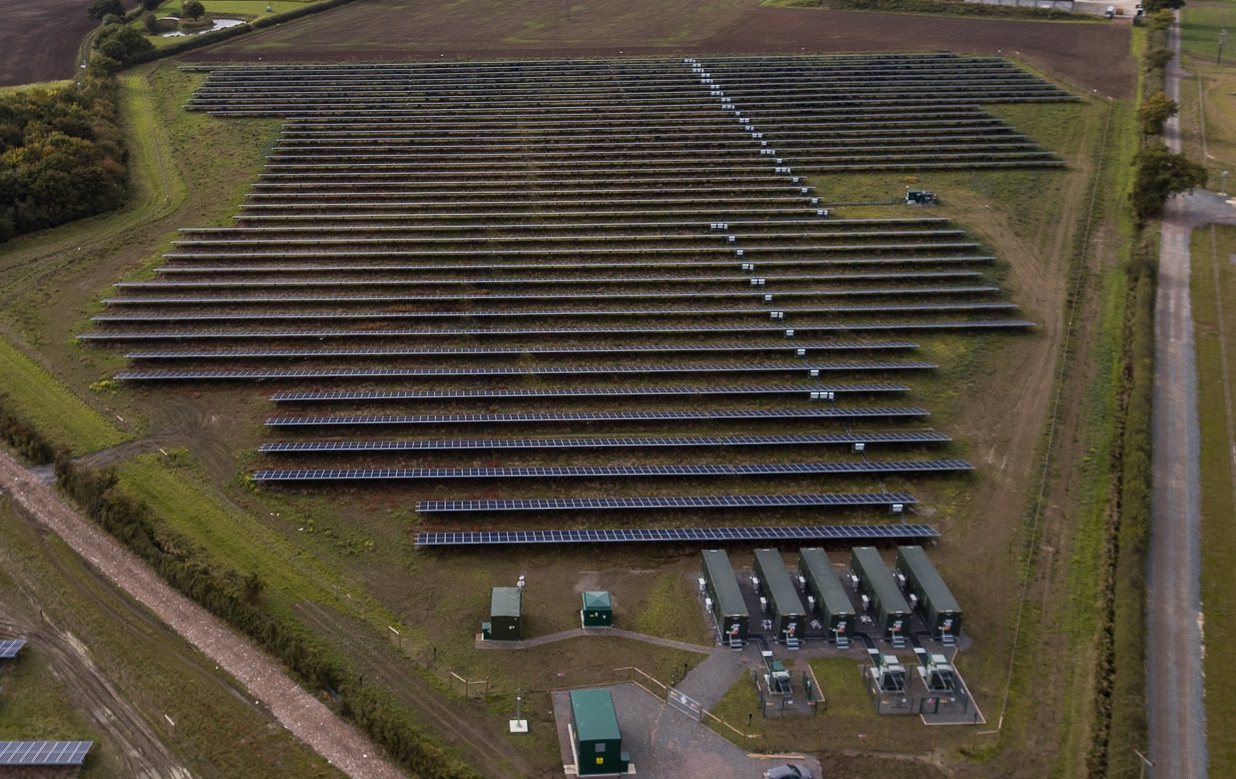
The economics of solar-and-storage in the UK are being proven, Anesco has said.
Speaking at the Energy Storage Summit in London, Steve Shine, Anesco’s chairman, explained that while the company had not proven the case for subsidy-free solar, the business model for its hybrid Clay Hill project was panning out.
When Clay Hill was unveiled as the UK’s first subsidy-free solar project last summer it captured the attention of industry and government officials alike. Energy and climate minister Claire Perry has since used the project’s completion to claim that solar PV is capable of deploying without subsidy support.
But Anesco has distanced itself from those specific claims and yesterday Shine insisted that it was not true that the industry has “cracked” subsidy-free solar. Instead, Shine sought to stress the difference between true subsidy-free solar and hybrid projects that combine the generating capacity with battery storage.
“Solar by itself does not pay,” he said stressing that Clay Hill was a hybrid project. “The revenue model is stacking up well and now are going to grow that and prove at a number of other sites.
“At Clay Hill we designed it to keep the capital cost as low as possible and to keep the operational cost as low as possible for the next 20 years,” he added.
In discussing project financing and the specific revenue stack behind Anesco’s projects, Shine indicated that banks his company were speaking to were becoming more comfortable with the merchant risk behind co-located solar and storage.
Clay Hill and other prospective hybrid projects by Anesco were submitted for both the T-1 and T4 Capacity Market auctions earlier this year but failed to qualify. If successful, these auctions could have secured 15-year contracts for the projects to provide back-up capacity should the grid need it.
But Shine said that it was of little concern that the projects missed out on the Capacity Market, stressing that revenues from that mechanism would only have accounted for as little as 6% of revenues after battery storage technologies were de-rated.
Shine also acknowledged that solar’s push to subsidy-free status had been hindered by PV module prices increasing through 2017, that was likely to change after the recent introduction of trade tariffs in the US.
Mark Henderson, CIO at GRIDSERVE, stressed that it was important to discern between new-build and retro-fitted co-location.
“On the financial side, when we talk about co-location we are talking about new builds together, not fitting storage to existing generation sites. That is fine from a technical perspective, but financially, unless you are going to get the same financier to finance the new one [it's difficult],” he said.
“Either it’s going to be on an equity-only basis or it is going to be really difficult to move forward. How do you share the grid connection for example? Who goes first? If they’re being financed all at the same time it is a lot easier,” he added.

